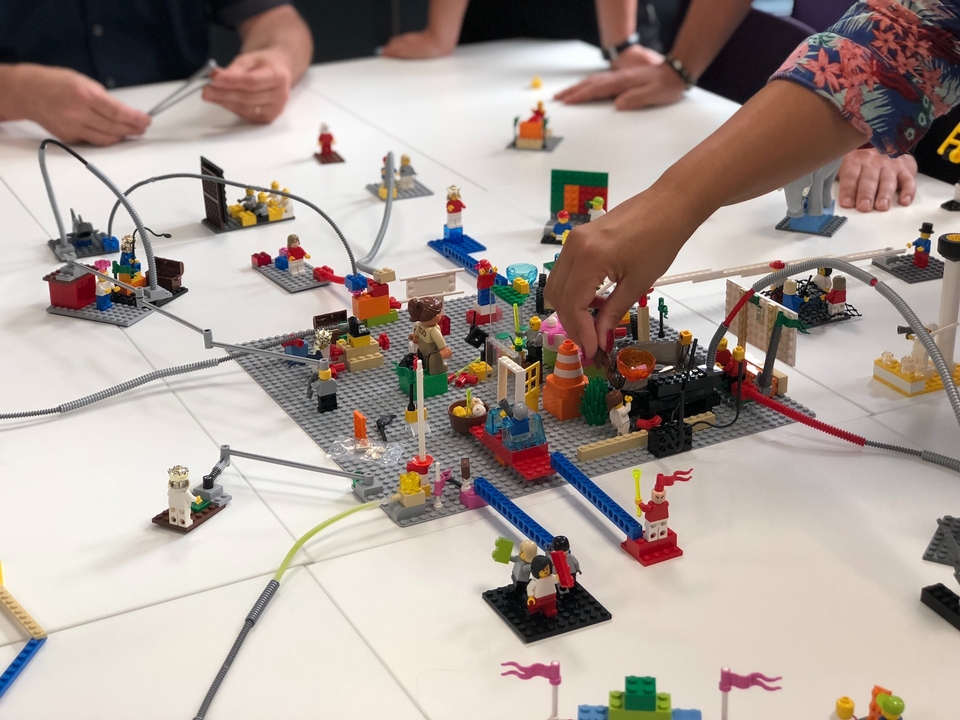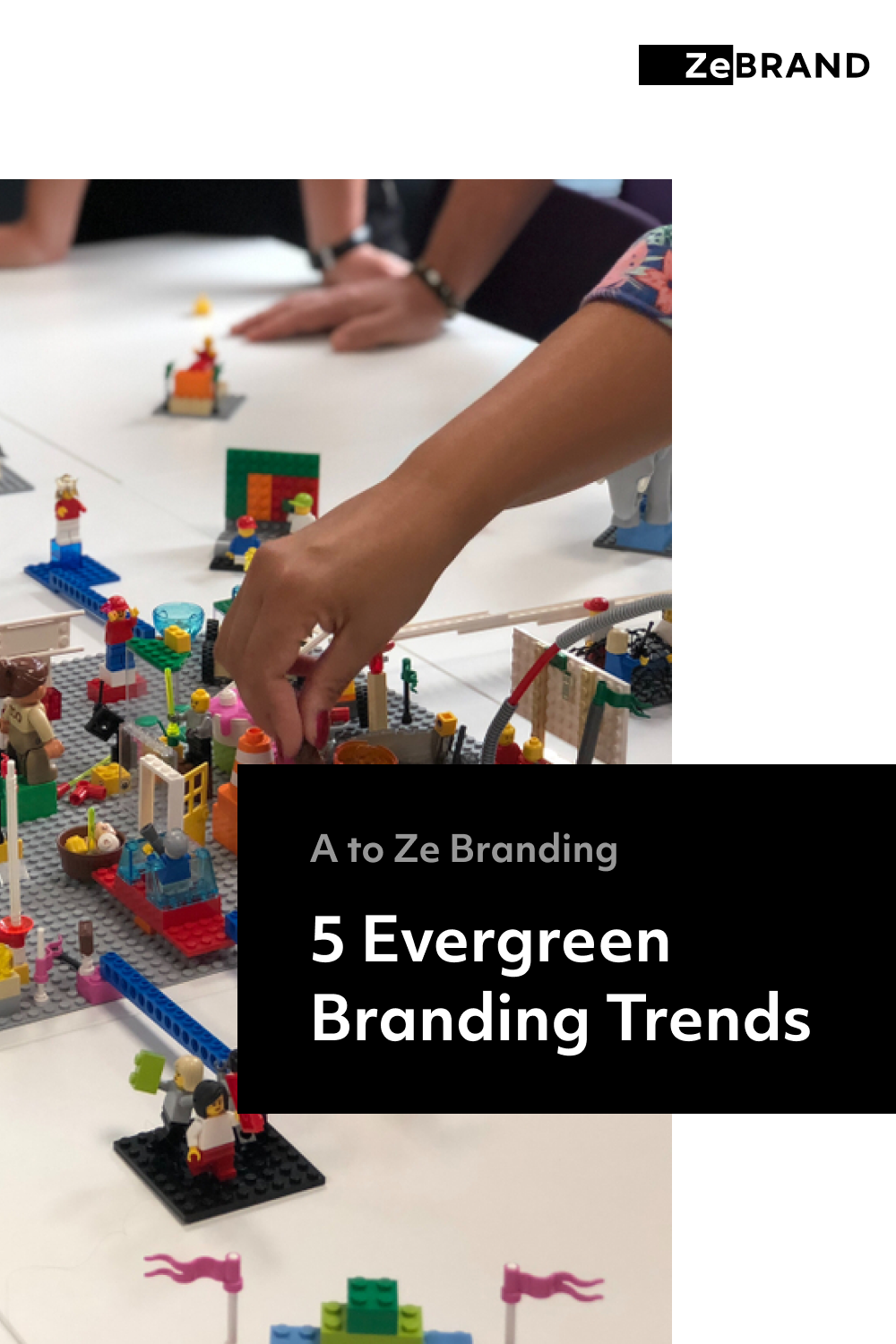5 Evergreen Branding Trends

Lego's unique approach to making user experience central to their branding has brought it a lot of accolades.
Good branding helps you stand out
Today’s consumers are overloaded with choices and so are quick to decide which brands they choose and stick to.
Good branding ensures you make a great first impression. It is not just only about your product, but also how your brand and business is perceived.
How can you stand out among thousands of competitors? What could you be doing differently? How can you make your brand more engaging for your customers? Businesses have many challenges when thinking about how to brand themselves.
In order for your business to stand out, stay fresh and address some of these challenges, we’ve put together 5 essential branding trends that have stood the test of time. Consider incorporating some or all of these into your own branding.
5 evergreen branding trends
1. Be consistent all the way
A good brand builds loyalty and develops trust among its customers. One important way of achieving this is consistency. Customers should have a consistent interaction with your brand whenever they encounter it. Here are some tips on how to be consistent as a brand.
・Have a brand toolkit with clear guidelines
Have a brand style guide. This will ensure your message is consistent across channels. The guidelines you incorporate should be in line with your brand personality and vision. Mozilla has a clear style guide that is on point. This is useful not just for your marketing teams but for all your employees.
Source: Mozilla website
・Be aware of how you communicate across channels
As your business grows, so will the channels of your communications. Keep in mind your brand’s personality whenever you are communicating on different media channels. For example, you may decide to be more formal on LinkedIn than on Instagram, but this should not sound like a different brand altogether.
2. Make your branding customer-focused
Brands are involving consumers and collaborating with them in their creative process. User experience is becoming paramount. The Bynder State of Branding 2020 Report found that user experience will overtake price and product as the biggest brand differentiator by the end of 2020.
When a customer has a great experience with your brand, they are more likely to be loyal to it as well as recommend it to their friends. Here are our top tips to help you create a seamless customer experience.
・Think about your target audience and how they behave
Do your customers shop online, or offline? What are their interests? Could it be worth creating an online community for your customers? Your social media and analytics are good places to understand these factors and more.
・Pay attention to how seamless the user’s experience is on all your brand’s channels
When a customer sees your ad on Instagram, then clicks on the ‘shop now’ button, does it link to the e-commerce page of your site? Does the messaging on your site have the same tone of voice as the rest of your messaging on social media and other channels? It’s important that the user feels they are interacting with the same brand throughout their experience.
A good example of a brand getting this right is LEGO, who is pioneering this movement by asking customers for ideas for new LEGO creations. In one of their campaigns, winners receive exciting prizes and also have the opportunity of seeing their idea being turned into a real life LEGO set. LEGO ensures that the messages consumers see are consistent through different media channels like social media, search engines, and offline media like print.

Photo by Alphacolor on Unsplash
3. Be a socially responsible brand
In a survey conducted by the consulting firm Deloitte, 20% of respondents said they cared about how a company treats the environment and 19% was concerned about how the company supports the communities in which it operates.
There are different ways for you to do this irrespective of the size of your business. Some examples include volunteering in the community, corporate policies benefiting the environment, and investments in social causes.
A brand doing this well is TOMS. Upon purchasing a pair of shoes on their site, you are given an option to support one of five choices including giving a pair of shoes (the original component of their mission statement which fueled the brand’s growth). TOMS shares part of its profit with non-profits that are working towards specific causes.
Photo by Tyler Nix on Unsplash
4. Nurture your online communities
As a growing business, you will have many opportunities and environments to interact with your customers, be it in store or online, on social media, email etc.
Important spaces to build and nurture relationships with customers are online communities. Within these communities, customers can also interact with each other, meeting like-minded souls.
Sephora has a fantastic online community called Beauty Talk. In this forum customers share their ideas, beauty tips, and thoughts on Sephora’s wide range of products. It’s also a great place to meet other beauty enthusiasts.
PlayStation also has a great community where gamers can discuss their favorite games in dedicated channels. People can also compete with each other online as part of the community’s rewards-based ‘Trophies’ system.
Online communities help in increasing customer loyalty and retention. They are also an extremely valuable source of information that can help you understand your customers much better and customize your business accordingly.

Photo by John Schnobrich on Unsplash
5. Keep your visuals engaging and on trend
・Use logos that are adaptable
As your business expands, the places where you use your logo will increase. Companies are starting to create shape-shifting logos. A logo size, shape, and other features should adapt to the placement of the logo, whether it’s a social media avatar or on a flyer. This ensures consistency throughout your communications. Adapting this trend has advantages for your business. Over time customers can also begin to associate your logo with your brand. Different channels require different layouts, so your brand’s logo should be responsive and adapt to devices (mobile, desktop, tablet) or channels (site, social network, email etc).
Services like ZeBrand offer a plug-and-play solution in its AI-generated branding toolkit, where your logo size and dimensions are automatically optimized for various social media platforms and ready for use. Having logos specific for different occasions (eg. product launch, new offer, product update) is also a way of keeping your customers engaged.
・Use 3D to capture attention
For years, designers have been using 3D in their logos and lettering to create visuals that make a viewer stop and scroll back. Now the trend is back. This is a creative way for your brand to show off its personality and stand out among competitors.
・Use minimalism in your design
Minimalism has been an ongoing trend for the last couple of years and it looks like it is here to stay. From its visual appeal, to its practicality, businesses are adapting minimalism in different aspects of their branding. A lot of companies are preferring to have a minimalist website, so their site has a fast loading time and is compatible across devices.
Branding trends come and go but some of them outlive the rest. When invested in the right way, these can have a long-lasting impact on your business.



